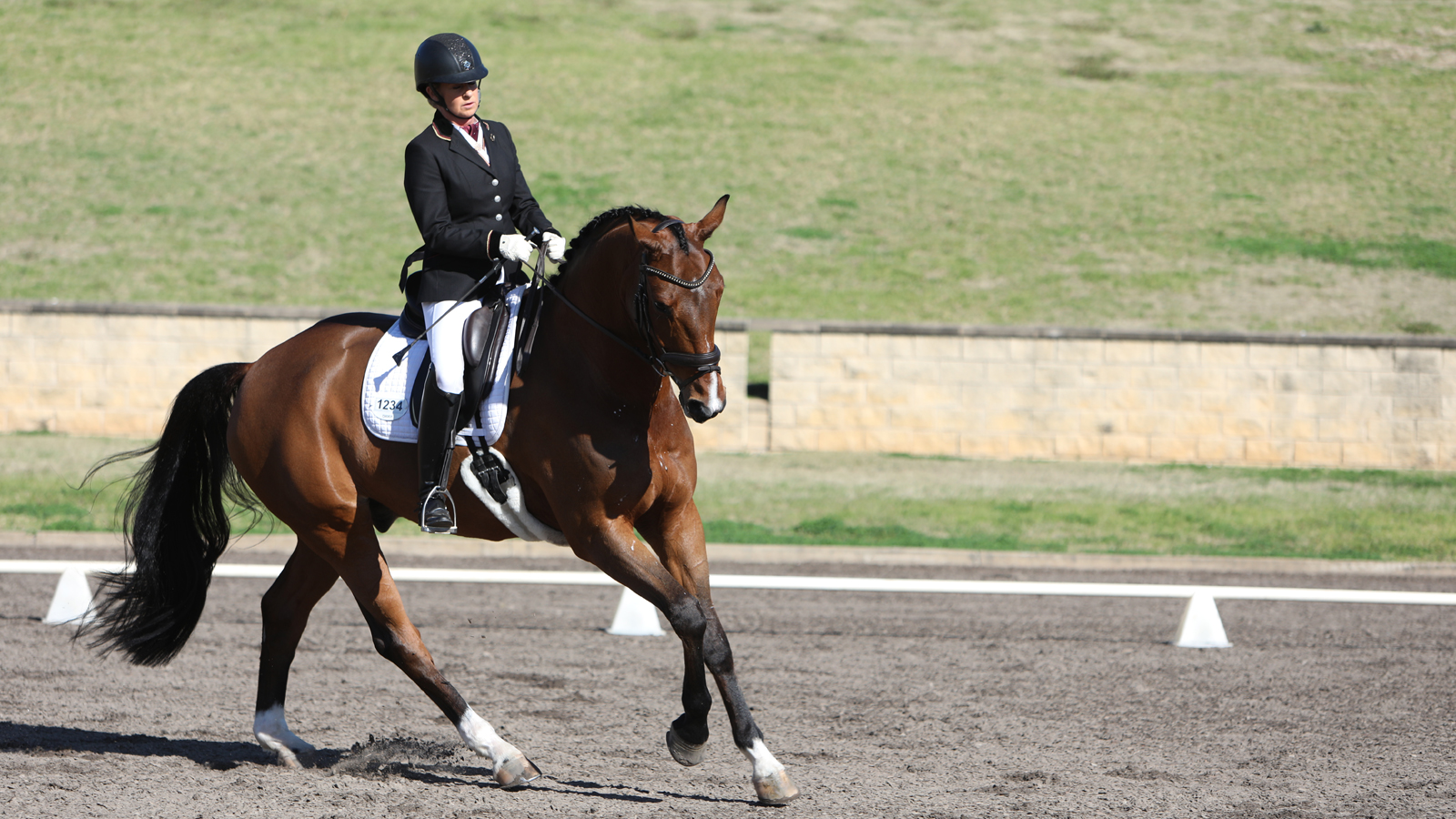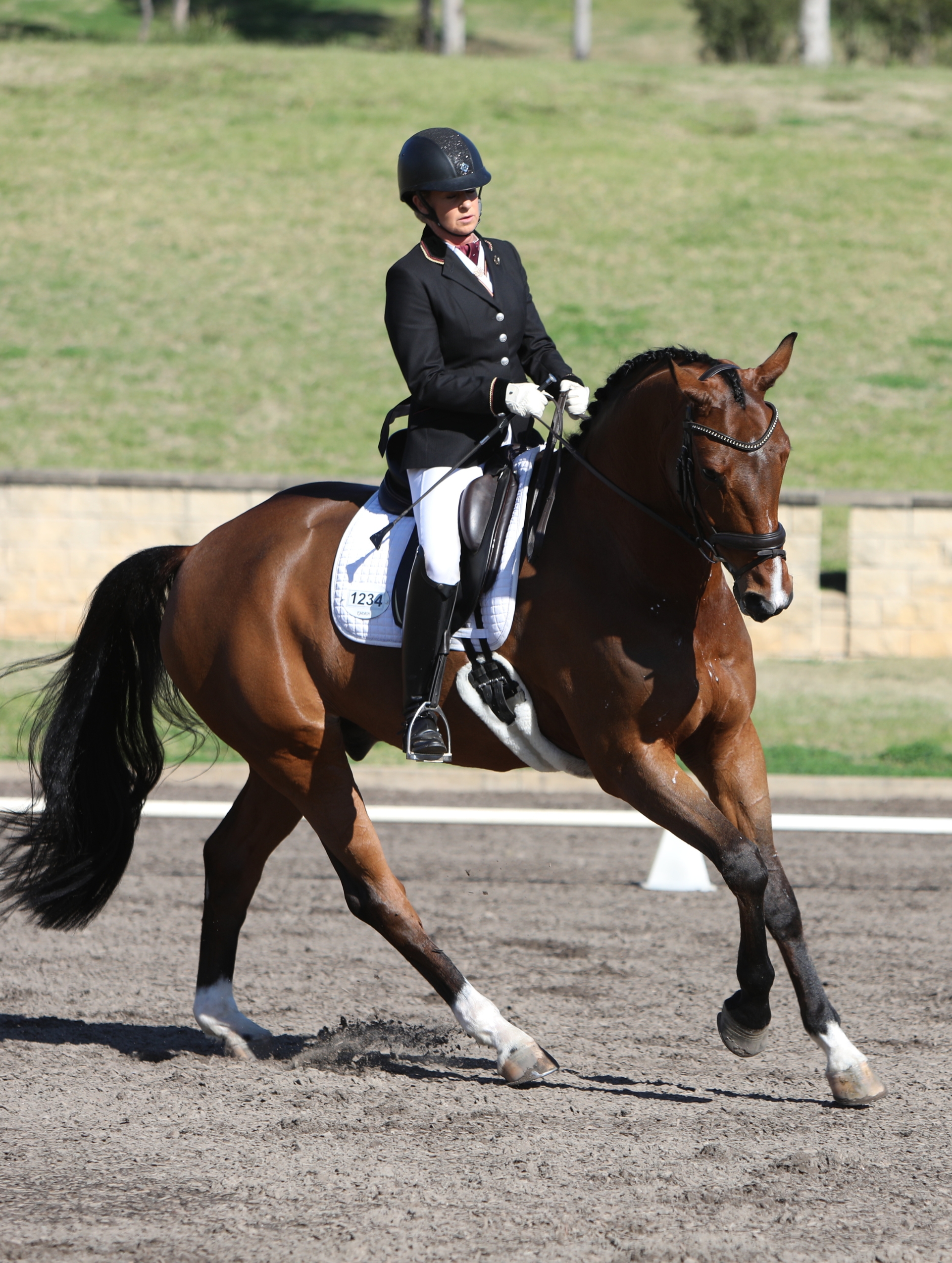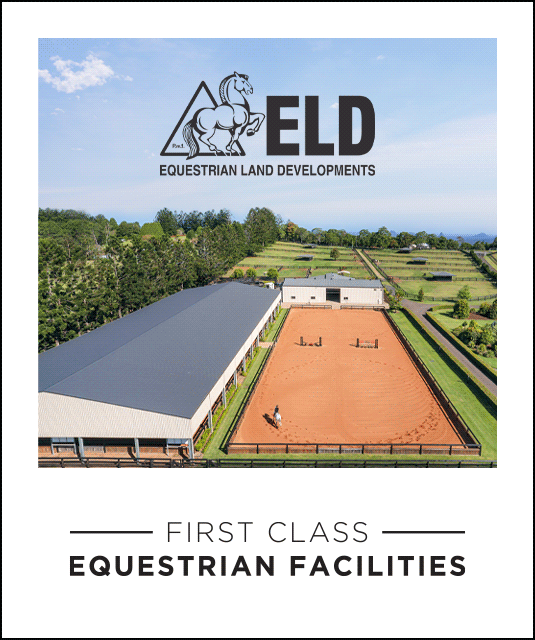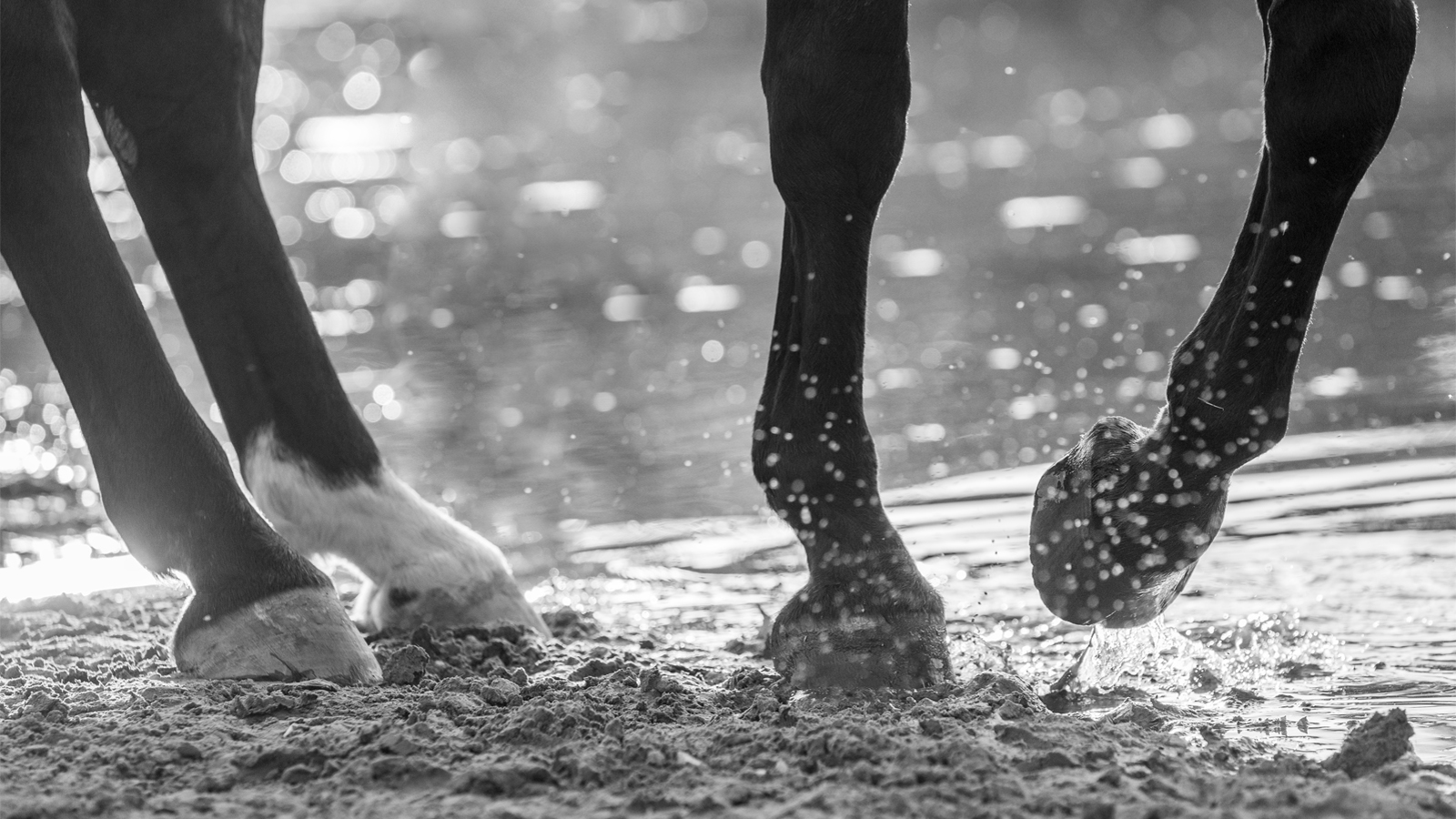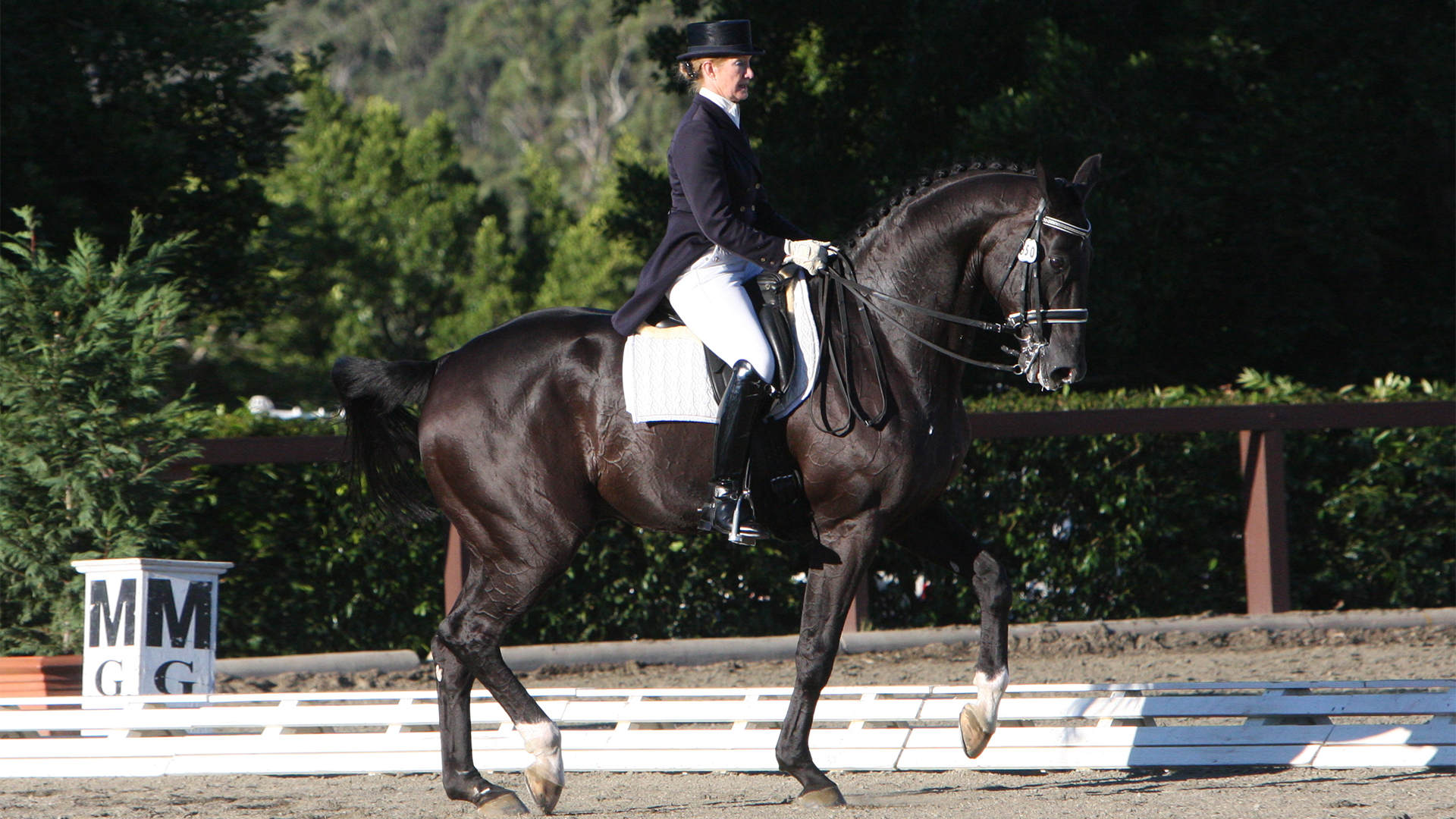Not only is the simple change a movement that collects a lot of marks at Elementary level, the transitions walk-to-canter and canter-to-walk carry many marks right through to Grand Prix.
The simple change is an exercise that will be used so many times in preparations for pirouettes, half-pass canter, transition to halt and extended canter to collected, and is a basic extension of the half-halt in canter. At Elementary, this exercise shows judges the ability of the horse to sit, to carry weight in a true uphill manner, and is a true indication of submission, lightness, engagement and honesty in the communication in an empathetic way between rider and horse.
This is Equestrian Australia’s rule book definition of the simple change:
2.5.7 Simple change of leg at the canter is a movement which, after a direct transition out of the canter into a walk, with 3 to 5 clearly defined walk steps, a transition is made into the other canter lead.
Looks pretty simple! And easy… don’t think it is!
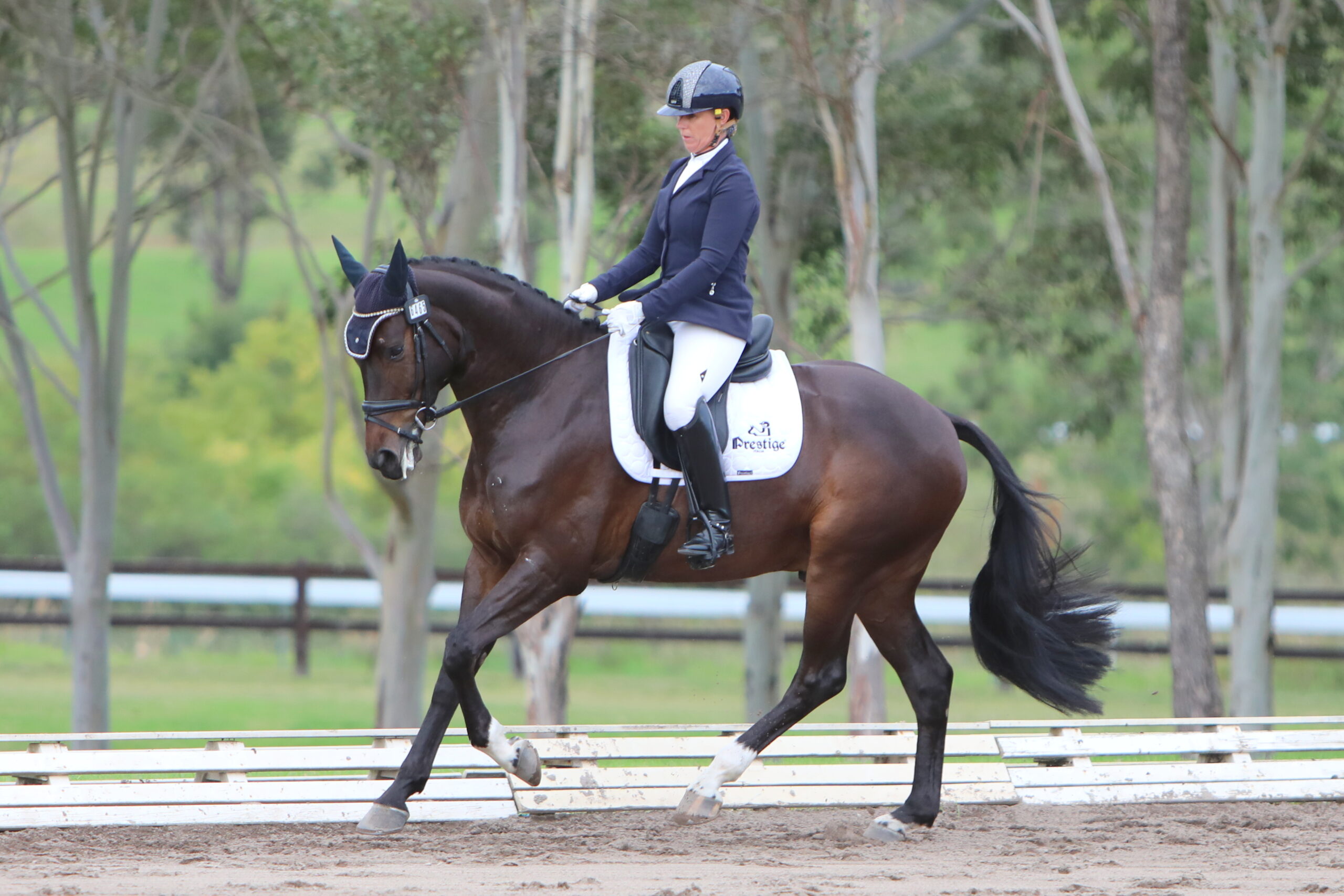
You firstly need a canter that is balanced – as is seen here – and the horse needs to understand the half-halt, so he can sit and engage in an uphill way to make the transition to walk. Image by Roger Fitzhardinge.
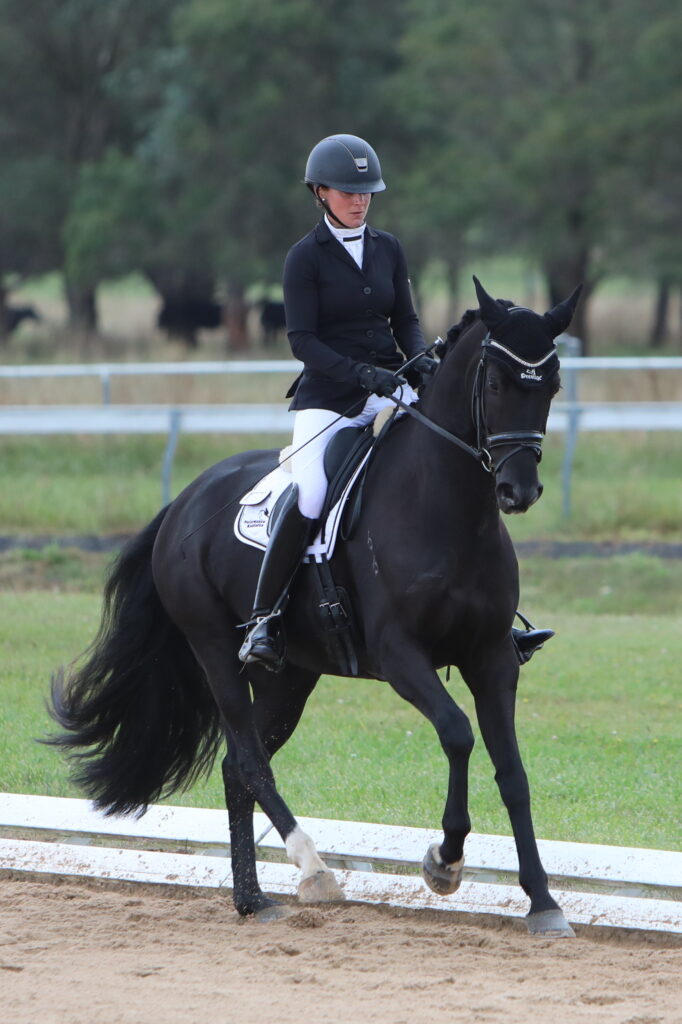
It’s easy to see here that engagement and an uphill feeling may enable a wonderful collection to the walk, and this is what is needed when riding a simple change. Image by Roger Fitzhardinge.
One would wonder then if any elements can be overlooked and Maribel advises that if the rider has fulfilled the requirements above, then a judge can live with more walk steps than the required number. “Sometimes it is better to give the young horse or rider a chance to take a little bit more time and perform a more fluent transition, than a rough one lacking preparation,” she says.
TRANSITION TO CANTER
Before knitting the simple change together, it’s important to simply work on firstly the transition to canter from walk. You must have an ability to collect the walk with an active stride, with a horse that remains light-footed and active in the walk; they need to be excited about the upcoming transition without losing the walk tempo. They should show true collected strides and remain on the bit. The horse should have an understanding of the canter aid that would have previously been taught through trot: outside leg behind the girth, inside leg on the girth, slight flexion to the inside, and a supporting outside rein to stop the horse from running away in trot in the beginning and keeping the collection with activity in the walk so the canter can be also lively, active and uphill. The walk must be dynamic – not dull, slow or laboured, but active, lively and reactive.
The transition from canter to the walk is not always the easiest transition. By the time you get to make this transition, a half-halt that has been well-established in trot and canter plays a very important role in the collecting of the canter back to walk.
“When we’re talking about looking
at a 10 for this movement, you
need to perfect the downward
transition from canter to walk.”

The engagement and lightness of the forehand before the walk transition. Image by Roger Fitzhardinge
When we’re talking about looking at a 10 for this movement, you need to perfect the downward transition from canter to walk, and in order to do this the horse must be able to canter on the spot!
When the horse is sitting engaged, balanced and light in the contact, the first step of walk is light and the feeling should be uphill. The feeling must be of the horse sitting with a raised forehand and the front feet light to the ground. The front feet must be feeling free to move and this comes from a good throughness to the bridle that at no stage is dull and dead in the rider’s hands.
A problem that comes into this transition is always falling out of the canter into trot (on the forehand). There must be no trot steps in a simple change. It must be canter, walk, canter. It’s also very important to be seen to be able to control the walk steps without your horse anticipating that as soon as he goes canter-walk, the next transition is going to be canter.
With horses that anticipate the walk transition and drop the rider early, you must try then to ride the collected canter forward and then collect again until you feel that the last stride of the canter can melt down into an elastic walk stride.
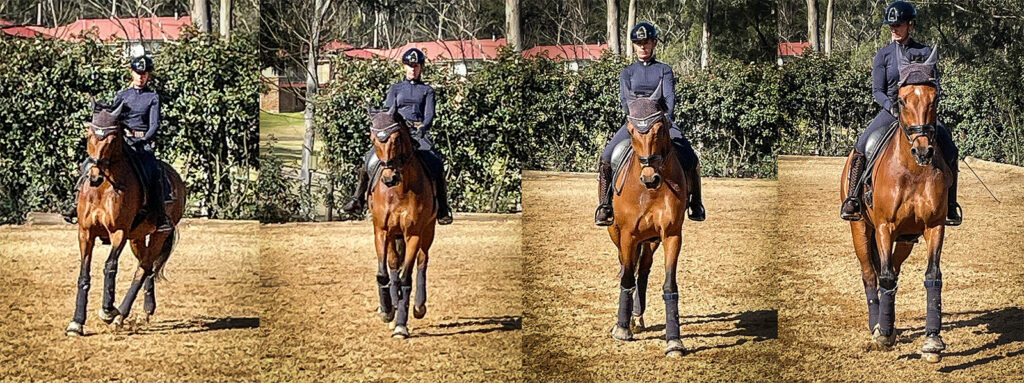
HANDY HALF-PIROUETTE
Very handy and helpful in the beginning of a walk-to-canter transition is a half-pirouette in walk. So ride a half-pirouette, for example to the left, and as soon as you finish that pirouette to the left, then strike off in the canter right, at a place on the arena that is open and easy. Vice versa, half-pirouette right, to canter left. This exercise is very good for positioning, balancing and creating activity, and it’s a great way to start canter-from-walk transitions.
The most important thing in the transition to walk is that many of the simple changes are done off a circle, a curved line or serpentine. In the canter-to-walk transition on a circle line, you must make certain that your outside rein and outside leg keep the horse very straight. If you create too much inside flexion while making the transition to walk, the horse will fall sideways, outwards, and cannot truly sit and engage. In fact, it is very important to use your outside rein and outside leg almost feeling that you push the horse in half-pass as you collect so you keep the hind legs straight and under the horse. As you do this you could also indicate a little with a new flexion to the new direction before you walk (i.e. using the old outside rein). So when you land in walk, your horse is already balanced for the new canter transition to the new direction.
This exercise – i.e. canter left, collecting slightly, pushing your outside leg behind the girth to get the horse to balance over to the left, so as you land the new flexion to the new direction (right) is already present – is, in fact, exactly the same as a preparation for a flying change.
Your horse simply needs to accept your rein and leg aid simultaneously to contain him and make him wait for the correct aid. Simple changes that are done correctly like this will make flying changes easy and will help a horse to realise he can sit and be balanced for the change without panicking. It teaches him to change bend and flexion before the flying change.
The simple change has many changes of position and balance. Never overlook the absolute honesty of being able to adjust the balance of your horse; the rider’s most important job is to create a balance by adjustable positioning, so the horse simply makes the movement that he is prepared for. EQ
